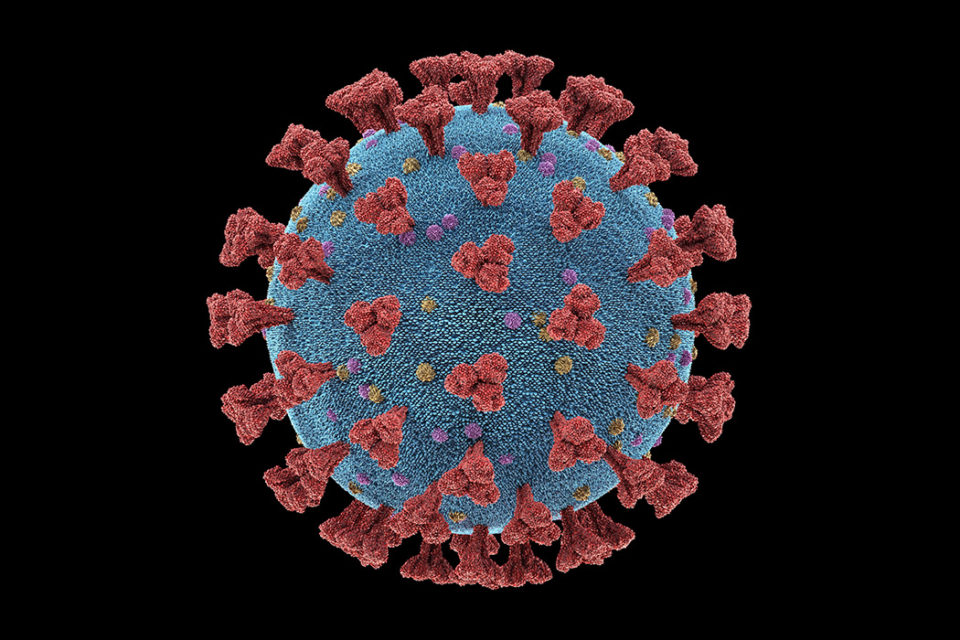Even though the World Health Organization (WHO) declared an end to the global emergency status for COVID-19, experts warn that countries still need to continue surveillance and monitor infections as this is a ‘continuing problem’, posing a threat.
The global health agency ended the global ’emergency’ status—its highest level of alert—last week, more than three years after its original declaration, and said that countries should now manage the virus that killed more than 6.9 million people.
“It is therefore with great hope that I declare COVID-19 over as a global health emergency,” said WHO Director-General Tedros Adhanom Ghebreyesus, adding that the end of the emergency did not mean COVID was over as a global health threat.
The COVID death rate has slowed from a peak of more than 100,000 people per week in January 2021 to just over 3,500 in the week to April 24, 2023, according to WHO data, reflecting widespread vaccination, availability of better treatments, and a level of population immunity from prior infections.
However, the WHO emergencies director Michael Ryan still warned that the battle ‘is not over’.
“We still have weaknesses and those weaknesses that we still have in our system will be exposed by this virus or another virus,” he said.
Likely no COVID-19 surges expected in upcoming months might experience fall uptick: Tam
Canada’s Chief Public Health Officer Dr. Theresa Tam said on Friday that the country is not expecting to see any COVID-19 surges in the upcoming months, however, there’s likely going to be a fall and winter uptick. Tam added that deaths and hospitalizations due to COVID-19 have also been “relatively stable.”
Experts believe that although the WHO is technically correct to end the ’emergency status’, the change in terminology can mislead people worldwide into believing that the virus has disappeared, which in turn will give way to a dangerous level of complacency.
“I agree that an emergency, by definition, can’t be chronic. Unfortunately, many will misinterpret this announcement as the ‘end of COVID-19,” says Dr. Rajeev Jayadevan, Indian gastroenterologist and co-chairman of the National Indian Medical Association (IMA) COVID-19 task force.
According to Jayadevan, when COVID-19 was a new virus and vaccines and medicine were not useful, information and communication played a crucial role in saving lives.
So when an organization like the WHO says something, the world pays attention—but therein lies the problem. Most people will read the first line and the meaning will get lost in translation.Dr. Rajeev Jayadevan, Co-chairman of the National Indian Medical Association COVID-19 task force
“Remember that most individuals have no interest in learning about the technical aspects of a statement, right? I know it is technically accurate to say that the emergency is over, but the impact is, in fact, counterproductive.”
Canadian emergency physician Dr. Kashif Pirzada agrees with Jayadevan and believes that if the WHO comes out and says COVID-19 is not a problem, many people will stop paying attention to it and will consequently stop trying to take measures to curb it.
“I think you should still be aware that it still exists, especially if you have elder people in your life. Anyone going through a medical issue like cancer or pregnancy is still very vulnerable to this virus,” Pirzada says. “We still don’t have the correct medicines to deal with that.”
Pirzada also expressed his frustration on Twitter on Friday after the agency’s announcement and claimed that the WHO has repeatedly failed to rise up to the challenges of dealing with the virus.
“Except for a few Asian countries, no one has been about to spell out exactly how to live this new reality, between absolute panic, and absolute denial. The topic has become taboo, that even mentioning the word here will get this post off the algorithmic feed,” he tweeted.
Dr. Jayadevan also strongly believes that it’s still important to be cautious because COVID-19 has caused several permanent health defects in people of all age groups, and will continue to do so if the virus keeps circulating again and again.
Death isn’t the only outcome from COVID-19, that’s a foolish thing to believe. There are so many other known parameters that are being ignored, which will continue to accumulate as the virus circulates again and again.Dr. Rajeev Jayadevan, Co-chairman of the National Indian Medical Association COVID-19 task force
“If this was a virus that only affected you once and you recovered from it, it would’ve been fine. But that’s not the case and that’s the downside of it. If we throw mitigation away, we’re going to have more people infected over the next few years,” he added.
The most ‘painless’ way to prevent COVID-19 is being largely ignored
Experts also believe that the right kind of public health education, systemic changes like ventilation upgrades, and continuous surveillance is equally important today as it was during the pandemic.
“I think public education on what to do and how to prevent it is so important. For instance, California has a program called ‘Test it. Treat it. You can beat it. We need something like that here,” Pirzada says. The system involves offering patients free COVID-19-fighting medications as soon as symptoms become prevalent.
Jayadevan also thinks that correct messaging can really set the tone for how we deal with things going forward.
“The WHO director announced it as though it’s like ‘I now declare King Charles III the King of England.’ Instead, just stay quiet about it and say, ‘Look, we want continued measures even though the emergency is over‘. Rather than declaring it, I think that’s pretty silly.”
Both experts strongly believe that the easiest and the most ‘painless’ way of avoiding future infections is by upgrading indoor air quality systems in every building.
It works! There are studies that show children that go to schools with good ventilation are 75 per cent less likely to get sick. My children have never got COVID-19, and that’s because luckily I could afford to send them to a private school with good ventilation systems.Dr. Kashif Pirzada, Canadian ER physician
“It’s the most easy and painless way to do it. You are protecting people and they don’t even have to know or think about it. Small, inexpensive HEPA filters can be placed inside rooms, office spaces, and they really help.”
Dr. Jayadevan feels the exact same way and believes that countries like Japan that started monitoring indoor air in 2020 are way better equipped with dealing with COVID-19 than the rest of the countries.
“There have to be changes with the air that we breathe, particularly indoor air. But it’s not happening in countries like India. I don’t see any changes being made to the ventilation systems. I’m very sorry to say but in India, people don’t expect that level of quality. But the change has to come,” Jayadevan said.




 BREAKING
BREAKING